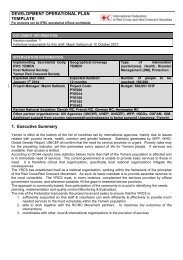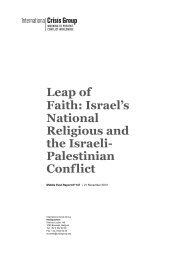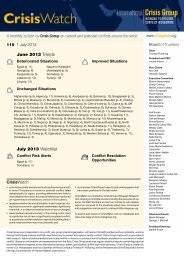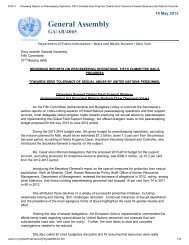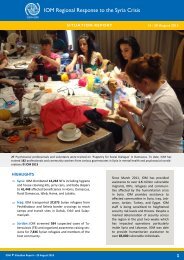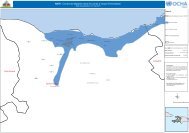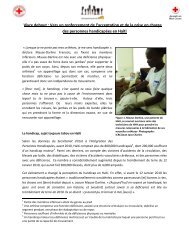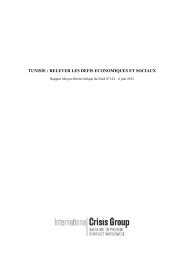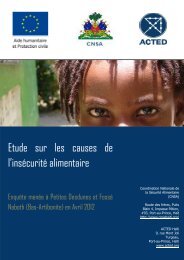SOMALI NUTRITION STRATEGY 2011 – 2013 - ReliefWeb
SOMALI NUTRITION STRATEGY 2011 – 2013 - ReliefWeb
SOMALI NUTRITION STRATEGY 2011 – 2013 - ReliefWeb
You also want an ePaper? Increase the reach of your titles
YUMPU automatically turns print PDFs into web optimized ePapers that Google loves.
Foreword<br />
Good nutrition is one of the key foundations for the development of a healthy, productive population.<br />
Well nourished people are less likely to become ill or die, and are more productive and better able<br />
to learn. Achieving good nutrition, particularly among women and children, is associated with<br />
important short and long term health, educational and economic benefits.<br />
iii<br />
Situational analysis of data from Somalia over the last decade indicates that undernutrition is a<br />
significant and enduring public health problem and a major factor in the failure to meet MDGs<br />
on hunger, child health, maternal mortality, gender equality and education. Rates of acute and<br />
chronic malnutrition have remained persistently high throughout Somaliland, Puntland and South<br />
Central Somalia, with some variation by zone and livelihood system.<br />
Ongoing conflict, displacement, breakdown in social and public services coupled with recurrent<br />
droughts and flooding have significantly affected food security and livelihoods and therefore<br />
nutritional status. However, there is a growing body of evidence that other underlying causes<br />
also contribute significantly to high and persistent undernutrition. These factors include: chronic<br />
poor dietary diversity, inadequate infant, young child and maternal feeding practices, poor<br />
hygiene practices, water and sanitation, poor health seeking behaviours and low access to quality<br />
health services and education and gender inequalities. The persistence of undernutrition, even<br />
in years of relative stability and good harvest, adds further weight to the importance of these<br />
multiple underlying causes which by their nature cut across traditional sectors. With increasing<br />
understanding of the causes and their complexity, the challenge now is to strengthen efforts to<br />
address them through an integrated multi-agency, multi-sector response.<br />
The objective of the work carried out by authorities, donors, UN agencies and local and international<br />
implementing partners was to develop a joint framework for action to improve the nutritional<br />
status of the Somali population, thereby contributing to an overall improvement in their survival,<br />
growth and development.<br />
The activities detailed in this strategy aim to respond to the challenges raised above and focus<br />
interventions to achieve 6 priority outcomes that will lead to accomplishment of the overall goal:<br />
i) improved provision of quality services for the management of acute malnutrition; ii) sustained<br />
quality nutritional surveillance and analysis of nutrition information to inform appropriate and<br />
rapid responses; iii) improved knowledge, attitudes and practices regarding infant, young child<br />
and maternal nutrition; iv) improved availability, accessibility and coverage of micronutrients<br />
and de-worming; v) increased redress of underlying negative practices through awareness and<br />
commitment to effective action across other sectors and finally vi) improved capacity and means<br />
in country to make effective nutrition responses.<br />
The development of the strategy has been based on a number of guiding principles. Primarily<br />
the strategy recognises the basic human right to adequate food and health and freedom from<br />
malnutrition and disease. It respects the humanitarian principle of ‘do no harm’ such that its’<br />
implementation should not exacerbate or worsen the situation.<br />
A key guiding principle is recognition of the specific context and challenges of implementation<br />
in Somaliland, Puntland and South Central Somalia. The multi-sectoral responses identified<br />
are based on an understanding of the specific political, economic, social and cultural factors<br />
that determine nutritional status. The interventions detailed in the action plan reflect universally<br />
accepted best practice and evidence-based programming. However, not all interventions proven<br />
effective in addressing malnutrition (The Lancet series on Maternal and Child Undernutrition) are




